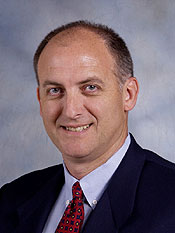Program Information
Post-Graduate Training of the Next Generation of Academic Medical Physicists
J Hazle1*, J Deasy2*, (1) UT MD Anderson Cancer Center, Houston, TX, (2) Memorial Sloan Kettering Cancer Center, New York, NY
Presentations
2:45 PM : Building a career in academic medical physics: the hardest and best job you will ever have! - J Hazle, Presenting Author3:15 PM : So you want to do research: two approaches to beginning a career in medical physics research - J Deasy, Presenting Author
WE-G-204-0 (Wednesday, August 3, 2016) 2:45 PM - 3:45 PM Room: 204
While many indicators for academic medical physics are distressing – jobs are tight, demands on clinical time are high (and getting worse) and national funding has been flat for several years (meaning less money in reality) the present is perhaps one of the most exciting times in cancer research history, and medical physicists have an opportunity to make a difference.
Many of us predict the impact of medical physics on cancer research over the next decade to be more significant than ever. Why is that? First, medical imaging is used for every cancer patient in developed countries. Every improvement in the acquisition, processing or analysis of radiological images has the potential to impact patients. The use of radiation therapy is at an all-time high – and virtually cannot be performed without medical physics. Many of the advances in both biomedical imaging and radiation oncology are the result of the hard work of academic medical physicists who are thinking of the next generation of technologies that will be used against cancer or an even broader spectrum of diseases.
A career in academic medical physics is demanding, particularly for those with clinical responsibilities. As the demands for justification of their clinical effort become increasingly metricized, the ability to do “unfunded research” will become even more difficult. This means that many will have to generate external salary support to justify their efforts in research and development. This comes at a time when funding for research is compressed and harder to obtain. Generally speaking, if you are not contributing 50% or more of your effort to research, you are competing at a disadvantage and it is very unlikely you will get an NIH/NCI/NIBIB grant.
Furthermore, in the ongoing effort to improve patient care and safety, we have developed credentialing pathways that now require at least two-years of residency training. This full-time clinical training creates a gap in the research trajectory of graduate students who aspire to academic positions with an expectation for extramural funding. To address this, several residency programs have created hybrid programs where the two-years of clinical training is combined with one or two years of research effort to allow candidates to further establish an academic identity and to ensure adequate academic productivity to compete for a beginning faculty position.
In conclusion, while the path to a successful career in academic medical physics is steep and sometimes hard to follow, reaching the apex is worth the journey. Different paths to a career in medical physics are available, you just have to decide which one is right for you. If improving cancer care is your goal as a physicist, then academic medical physics is the job for you!
Handouts
- 115-32250-394514-118378.pdf (J Hazle)
- 115-32251-394514-118143.pdf (J Deasy)
Contact Email:




